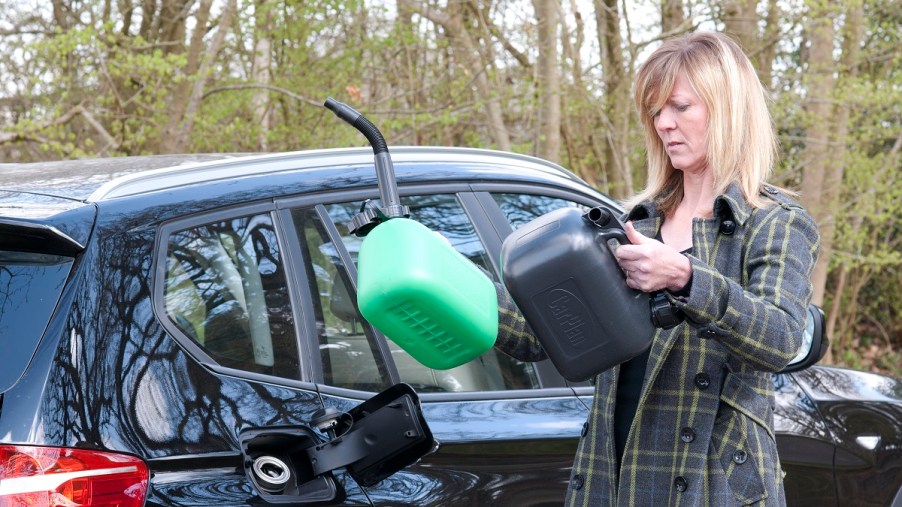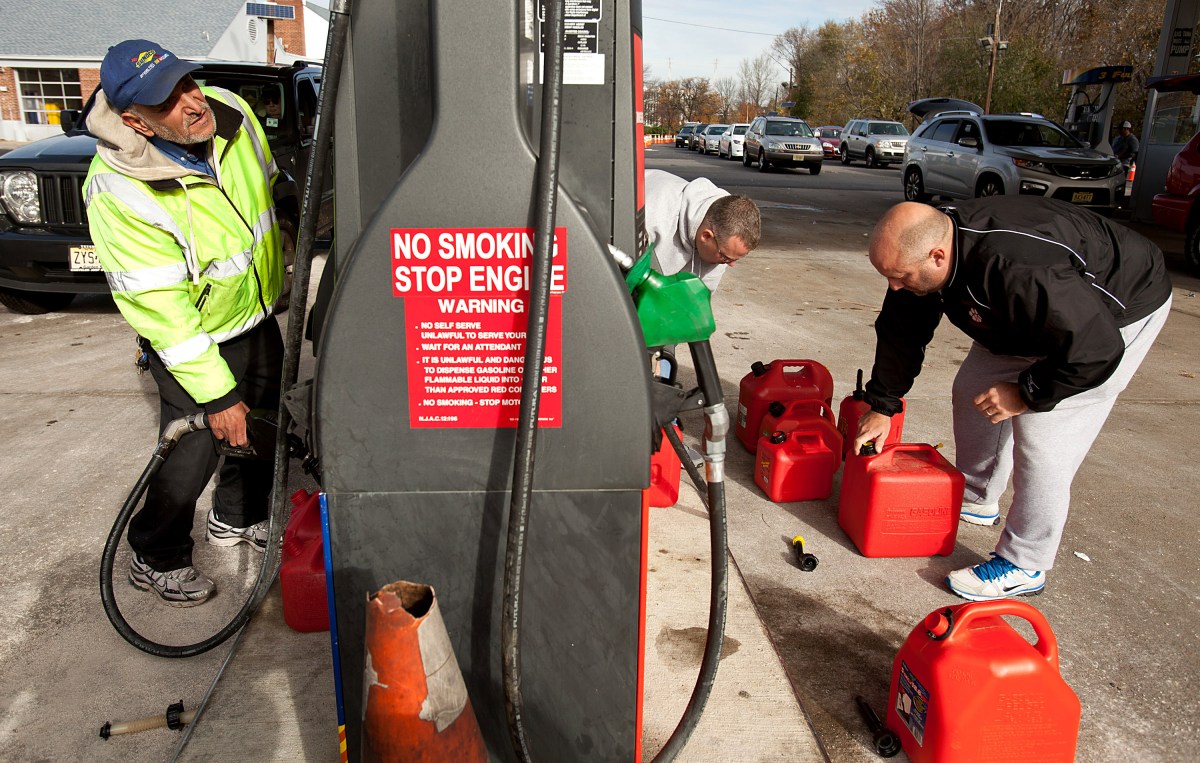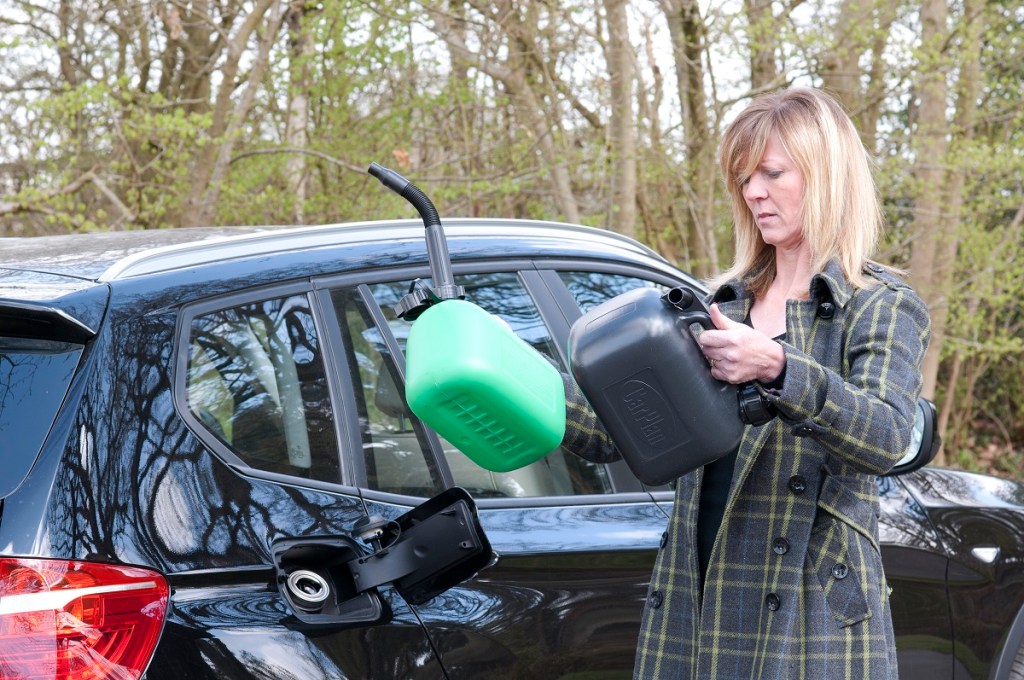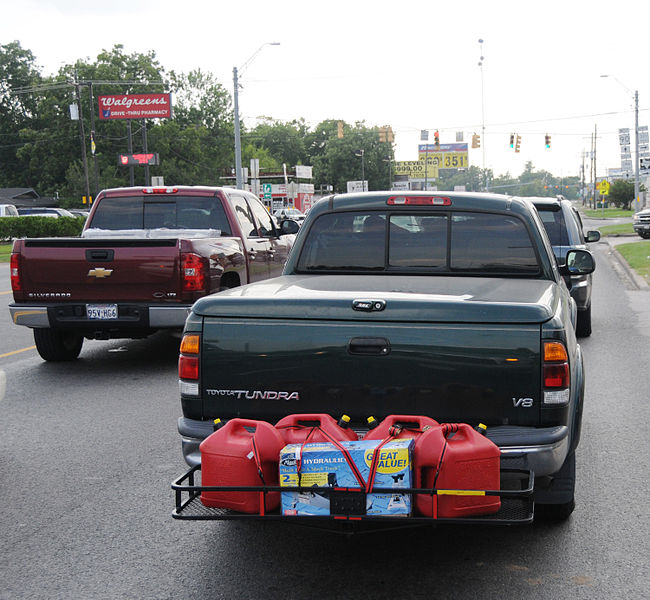
How to Transport Gasoline the Right Way
How do you transport gasoline? It’s spring, and for many of us that means that we’re going to fill the lawnmower or weedwhacker with gas. But, how do you safely get gas from the station to your house? There is definitely a right way, and a wrong way, to transport gasoline in your car and store it.
Do I need a new gas can?

You don’t have to take it from us, the U.S. Forest Service has a handy guide. The first thing you need is a good gas can. Look for one with a UL rating or American Society for Testing and Materials (ASTM) rating, which ensures that it won’t melt or degrade with toxic fuel in it. Never, ever, use glass for gasoline because if it breaks, you’re covered in highly flammable gas. And, though it’s tempting to grab Tupperware or some other plastic jug, gasoline will simply melt the plastics in non-approved containers. Also, they often let the toxic vapors out.
How to fill a portable gas can
There’s no real secret to properly filling a gas can. But, you should be careful and place the container on the ground first. It can’t fall off the ground. Fuel expands as it warms up, so never fill a gas can 100%, leave some room. If you’re filling up at a station, be sure to turn your car off and definitely don’t have any open flames nearby.
Gas station pumps are designed to trigger off when they’re your car is full, but they don’t always register the gas in a can. So, never trust the trigger lock on the pump and fill the can manually otherwise you can get a face full of fuel. When you put the cap on, make sure it’s tight.
Did you know the gas can colors mean something?

One trip to your local Ace Hardware, and you’ll see a bunch of bottles and cans that all look alike, but they’re in different colors. One tip is to know those colors are there for a reason.
- Red cans are for gasoline.
- Blue cans are for kerosene.
- Yellow cans are for diesel.
- Green cans are for oil
You can put one fuel in another bottle, but then that can is forever tainted with whatever you put in it. Just remember, it’s a terrible idea to mix diesel, gas and kerosene.
How to transport gasoline in can in a car without fumes?

A UL-approved gas can will likely minimize odors and fumes, but gas fumes are pesky. If you have a truck, put the can in the bed and tie it down so it doesn’t tip over. Generally, it’s best to transport it on the outside of your car in a car. But, not all of us have roof racks or jerry can storage. If you have a car, put it in the trunk and secure it. SUVs don’t have any outside areas to store gas, so one trick is to put the can in a garbage bag or other kind of plastic and tightly close it for short trips.
Always secure the gas can out of the sun. The sun can heat up a gas can more than you realize and cause an explosion. And, gas can are notoriously finicky to open and close so we always recommend using a funnel to fill your lawnmower or weedwhacker. Gasoline properly stored, in a cool dark place, will still be good to use after about six months.


